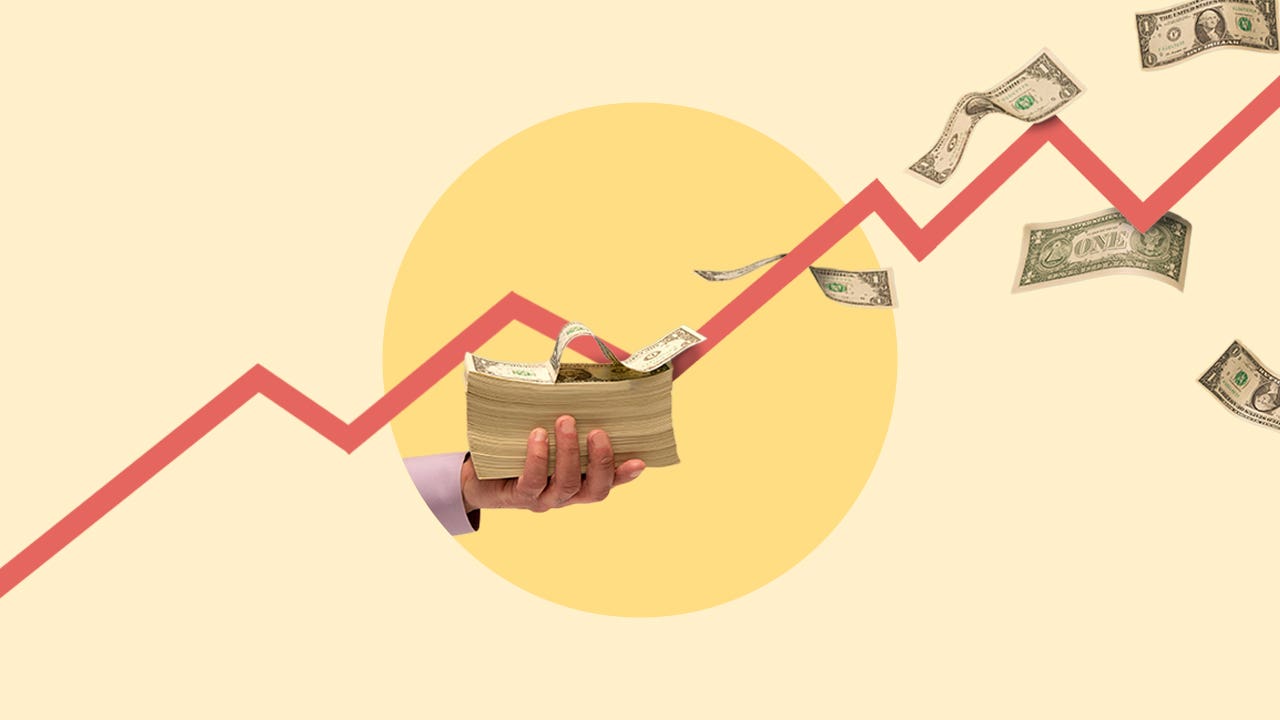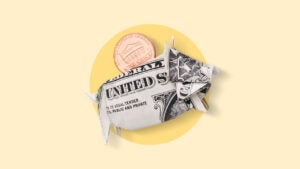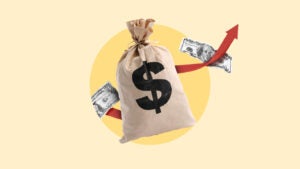Bankrate’s Interest Rate Forecast for 2025: See what’s next for mortgage rates, credit card rates, auto loans and more

Key takeaways
- The Federal Reserve is projected to cut interest rates three more times in 2025, bringing the key borrowing benchmark to 3.5-3.75 percent, according to Bankrate’s 2025 Interest Rate Forecast from Chief Financial Analyst Greg McBride, CFA.
- Even with three more rate cuts, the Fed’s key rate will hold at the highest point since 2008, keeping financing costs elevated across the marketplace on credit cards, auto loans, home equity lines of credit and more.
- Consumers are encouraged to shop around for the best offers, maintain good credit scores, bolster their incomes, grow their savings and pay down debt.
When Federal Reserve officials started rapidly hiking interest rates to temper the red-hot, post-pandemic economy, Chair Jerome Powell told consumers to think of it as a short-term sacrifice for the longer-term benefit of getting inflation back under control.
Fast-forward almost three years from that moment, and financing rates are still higher than at any point since the Great Recession nearly a decade ago. 2025 might be the year when consumers — and U.S. central bankers — start to accept it as the new normal.
Consumers entered a lower-rate — not a low-rate — era in 2024, as Fed officials cut interest rates a full percentage point over the course of three consecutive meetings. Yet, mortgage rates rose, while other key financing rates didn’t fall as much as the Fed’s key interest rate. It’s keeping financing costs all across the marketplace pricey, from credit cards and auto loans to home equity lines of credit (HELOCs) and more.
The Federal Reserve is projected to cut interest rates only three more times in 2025, according to the 2025 Interest Rate Forecast from Bankrate’s Chief Financial Analyst, Greg McBride, CFA. Those moves would take their key borrowing benchmark back down to 3.5-3.75 percent — still the highest since 2008. Fresh projections from U.S. central bankers updated in December also show that officials see interest rates staying elevated indefinitely.
Rate cuts still translate to cheaper borrowing costs. For the second year in a row, McBride expects all consumer financing rates to edge lower. Savers, meanwhile, will benefit, too, as many of the nation’s top banks continue offering yields that eclipse inflation.
Here are the key findings from Bankrate’s 2025 Interest Rate Forecast.
Rates were abnormally low for the better part of 15 years, and they've been abnormally high for the last two. They're coming down, but where they'll settle out is going to be a level that's higher than what we had seen before 2022.— Greg McBride, CFA | Bankrate chief financial analyst
Mortgage rates to hold near decade-plus highs, in what could feel like a ‘new normal’ for the housing market
By the end of 2025, McBride predicts that the average 30-year fixed-rate mortgage will fall 0.54 percentage point from its year-end 2024 level (7.04%).
For the Americans hoping to buy a home and the homeowners looking to move or refinance, waiting for mortgage rates to drop has felt a bit like hoping for rain in a drought.
Throughout 2024, the 30-year fixed-rate mortgage held below its peak of the post-pandemic era (8.01 percent, from October 2023). Yet, it spent half of the year above 7 percent, levels that previously hadn’t been seen since the early 2000s, according to Bankrate data.
McBride predicts some relief in the year ahead — but not much. As inflation proves stubborn and the economy holds up, the 30-year fixed-rate mortgage doesn’t look like it’ll fall as low as it did in the fall of 2024 (6.2 percent). Instead, it’ll likely spend most of the year in the 6-percent range, he says, with a short-lived spike above 7 percent. The 30-year fixed-rate mortgage is projected to end the year at 6.5 percent, he estimates.
Many of the affordability challenges afflicting would-be homebuyers might continue.
For starters, rates might not fall enough to unlock more housing supply. According to Bankrate’s July 2024 Mortgage Rates Sentiment Survey, 3 in 10 homeowners (30 percent) said mortgage rates would need to be less than 5 percent for them to be comfortable selling their home this year, while 21 percent say they need to be less than 4 percent. Meanwhile, if falling mortgage rates produce a surge in demand, rising home prices could quickly offset the benefit of cheaper financing costs.
“Waiting for lower rates is not guaranteed,” McBride says. “Over time, you’ll see prospective homebuyers just start throwing in the towel.”
One bright spot: Homes are staying on the market for longer. The housing market currently has a 3.8-month supply of inventory, a major improvement from the 2.9-month supply back in February 2023, according to the latest data from the National Association of Realtors. That might give buyers more negotiating power, McBride says.
Americans hoping to crack the housing market in 2025 should focus on what they can control, he adds, which includes bolstering their incomes, padding up their savings and paying down debt.
“Solid economic growth, wage growth that is ahead of inflation — that is what gives homebuyers the confidence to take the plunge,” McBride says. “In an environment where rates are still in the 6’s, that’s our new normal for now.”
Tapping your home equity will continue to be costly, but look for introductory offers
By the end of 2025, McBride predicts that the average home equity loan rate will fall 0.51 percentage point from its year-end 2024 level (8.41%).
McBride predicts that the average HELOC rate will fall 1.11 percentage point from its year-end 2024 level (8.36%).
Home values have soared, and homeowners are sitting on a near record amount of equity, according to Fed data. It hasn’t been the most opportune time to tap into it.
HELOC rates and home equity loans in 2024 fell from their highs of the prior year, but they remained historically elevated. HELOCs closed out the year at 8.36 percent, a level that hadn’t previously been seen since 2001, while home equity loan rates ended the year at a decade-plus high of 8.41 percent.
Borrowing against your equity is projected to continue being pricey in 2025, though flashy new introductory offers aimed at attracting more borrowers could help, McBride estimates.
McBride projects the average HELOC to hit 7.25 percent by the end of 2025, while home equity loans could hit 7.9 percent. Fixed-rate home equity loans will be lower, but variable-rate HELOCs will continue to be the more common option in the marketplace, he adds.
“For the better part of 20 years, homeowners got conditioned to the idea that home equity borrowing was a low-cost source of funds,” McBride says. “Those days are gone.”
Not all Americans, however, can time the market. When unexpected expenses arise, home equity is often homeowners’ main option for accessing capital. Other options — such as cash-out refinances — may look even more unappealing, especially to the homeowners not wanting to part ways with their historically low mortgage rate.
Be sure to shop around for the best offer, keep your credit score in tip-top shape and craft a game plan for paying the money back in case emergencies do happen, McBride says.
“If you need a new roof, if you have a major repair or even plan on doing significant upgrades, often times, home equity is the pot that money comes from,” he says. “You want to go in with both eyes open.”
Auto loan rates will remain pricey, but that might not be car buyers’ biggest problem
By the end of 2025, McBride predicts that the average rate on a five-year new car loan will fall 0.53 percentage point from its year-end 2024 level (7.53%).
McBride predicts that the average rate on a four-year used car loan will fall 0.46 percentage point from its year-end 2024 level (8.21%).
Buying a car in 2024 was a costly endeavor — and not just because of interest rates. New vehicle prices have surged about 20 percent since the pandemic-induced recession began in February 2020, according to data from the Bureau of Labor Statistics. Used vehicles, meanwhile, surged almost 25 percent over the same period.
In November, the average buyer paid almost $49,000, according to Kelley Blue Book’s latest data.
“Your interest rate could be zero, but if you’re borrowing even $45,000, that’s going to be a big monthly payment,” McBride says. “You’d have to reduce your interest rate a long way to have a meaningful impact on your payment.”
High financing rates, though, have dealt a double blow. After peaking over the summer, both the five-year new car loan and four-year used car financing rates have fallen modestly as the Fed has cut interest rates — a trend that looks poised to continue in 2025.
Five-year new car loan rates are projected to fall to 7 percent from 7.53 percent, while four-year used car financing costs could dip to 7.75 percent from 8.21 percent, according to McBride’s forecast for 2025.
The takeaway for car buyers: Shop around, show up at the dealership with financing options and work on improving your credit score. Borrowers with weaker credit will still find it harder to qualify for loans and their interest rates could be “well into the double-digits,” as auto loan delinquencies remain elevated, McBride says.
Yields will keep falling, but they’ll continue to outpace inflation at the nation’s top banks
McBride predicts that the highest-yielding one-year CD will fall 0.82 percentage point from its year-end 2024 level (4.52%). The national average is projected to fall to 1.25% from its current level of 1.93%.
McBride predicts that the highest-yielding on a five-year CD will fall 0.3 percentage point from its year-end 2024 level (4.25%). The national average is projected to fall to 1.35% from its current level of 1.42%
McBride predicts that the highest-yielding money market account and savings accounts will fall 0.95 percentage point from their current level (4.75%), while the highest-yielding savings account will also fall 0.95 percentage point (4.75%). The national average is projected to fall to 0.4% (from 0.47%) and 0.35% (from 0.48%), respectively.
The Fed cut interest rates twice as fast as McBride expected in 2024. Even so, yields didn’t fall as much as he initially projected — a feature of an environment where the Fed is projected to cut interest rates more slowly.
To be sure, only the savers who are keeping their cash in a bank where their money is rewarded are reaping the full benefits of today’s high-rate era. Even when rates were at their highest, yields at traditional, brick-and-mortar banks have remained below the overall rate of inflation (2.7 percent as of November, according to the Bureau of Labor Statistics).
- One-year CD: 1.93 percent (peaked at 2.15 percent)
- Five-year CD: 1.42 percent (peaked at 1.5 percent)
- Money market account: 0.47 percent (0.62 percent)
- Savings account: 0.48 percent (peaked at 0.53 percent)
That compares with nontraditional, online banks — which offer more attractive yields to drum up demand from depositors. They can also afford to pay greater returns because they don’t have as many overhead costs to pay.
- Top-yielding one-year CD: 4.52 percent (peaked at 5.75 percent)
- Highest-yielding five-year CD: 4.25 percent (peaked at 4.85 percent)
- Top money market account yield: 4.75 percent (5.3 percent)
- Best savings account yield: 4.75 percent (peaked at 5.55 percent)
“It will be another year where the highest-yielding savings accounts, money markets and CDs outpace inflation, while the averages – and the offerings at most banks – fall well short,” McBride says.
Yields may fall more at those top-yielding institutions, but they’ll still be the best depositors have seen in over a decade. McBride projects that the top-yielding one-year and five-year CDs will fall to 3.7 percent and 3.95 percent, respectively, by the end of 2025. Meanwhile, the top-yielding savings account and money market account is projected to hit 3.8 percent.
“The mind naturally equates declining interest rates with bad news for savers,” McBride says. “But they’re coming down slowly, and they’re still well above inflation. All of that adds up to a pretty attractive environment for savers, even at a time when rates are coming down.”
That compares with the average offers across the nation, which are projected to reach 0.4 percent and 0.35 percent for money market accounts and savings accounts, respectively. One-year and five-year CDs could fall to 1.25 percent and 1.35 percent, respectively.
Yields on shorter-term CDs — which are currently inverted and offering higher returns than CDs with longer durations — might fall at a steeper pace. Meanwhile, yields will mostly decline when the Fed is cutting interest rates, holding steady while the Fed maintains interest rates.
“Shopping around will continue to be important for savers to capitalize on the best yields and the substantial difference between the returns on the most competitive accounts and what everyone else is paying,” McBride says.
Credit card rates will edge off their record highs but remain pricey
By the end of 2025, McBride predicts that the average credit card annual percentage rate (APR) will fall 0.47 percentage point from its year-end 2024 level (20.27%).
There’s never a good time to have credit card debt. Even when the Fed’s key interest rate held at record lows, the average credit card charged about a 16 percent interest rate, according to Bankrate’s historic data.
That won’t change, even as credit card rates continue falling throughout 2025 as the Fed continues cutting borrowing costs.
McBride projects that the average APR on a credit card will fall to 19.8 percent by the end of 2025, down about half a percentage point from its current level. That’ll make hardly any difference for the 50 percent of cardholders carrying a balance month to month, according to Bankrate’s latest Credit Card Debt Survey. The first month of making a minimum payment on a $5,000 balance, for example, would be only about $2 cheaper with an interest rate of 19.8 percent versus 20.27 percent.
An escape route to getting out of credit card debt is pursuing a balance-transfer card option. Bankrate’s picks for the best offers are currently offering consumers the opportunity to pay down their debt with no interest for up to 21 months. If you’re able to craft a debt payoff plan and eliminate your balance before being transitioned back to the standard APR, you’ll likely supercharge your debt repayment.
Meanwhile, if you face an unexpected expense and have to rely on a credit card, look for cards with a 0 percent purchase APR promotion. In a stable economy, Americans with good to excellent credit may still be able to find those offers on the market next year, McBride says.
“The Fed is not going to cut rates enough to bail you out of a bad situation,” McBride says. “You have to continue to do the heavy lifting of paying down the debt aggressively.”









